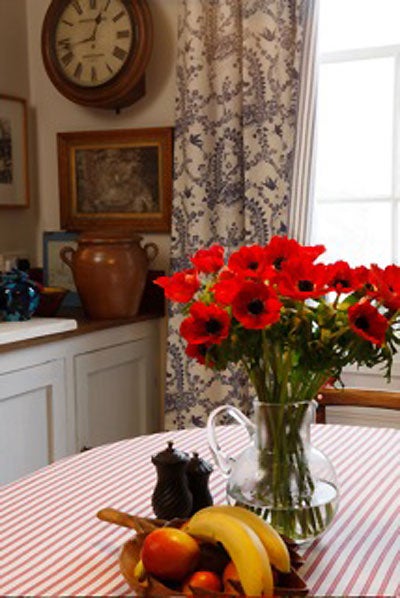Celia Birtwell: How soft furnishings differ from fashion

The difference between designing for the home and for fashion is enormous,’ Celia Birtwell told me in an exclusive interview. ‘Fashion moves so fast and is so demanding that there is little time to rest and take stock. 'Home' has longevity.’ Five decades on, textile designer Birtwell is back at the forefront of both the fashion and the interior industries. This autumn, she launches an online shop, and a home collection including readymade curtains, bed linen and a retro oilcloth for John Lewis.
Birtwell remains most notorious for her fashion designs of the late Sixties. Collaborating with her late husband Ossie Clark, she dressed the era’s rock aristocracy including Bianca Jagger, Marianne Faithful and Keith Richards. More recently, she had a sellout capsule collection at TopShop, designed a tent for Millets, and has, this season, designed a more mature collection of dresses and blouses for John Lewis. And yet – as she is fully aware - it is her soft furnishings (that feature in the homes of David Hockney and Jonathan Ross) that have the real permanence.
Her decision to design home fabrics stemmed from a yearning to create something with a longer shelf life than fashion. In 1984, she opened her shop selling home fabrics in Westbourne Park Road. Birtwell likes, what she calls, the slower pace of interiors and treats her fashion and home fabrics as two separate projects.
Fluidity within a fabric is her main concern, explains Birtwell’s daughter-in-law Bella Clark, who set up the new online shop selling vintage Ossie Clark/ Celia Birtwell; ‘When Celia is planning her textile designs for fashion, she always thinks of the movement going around and around the body, whereas when she designs for the home, it’s curtains, cushions or upholstery. These are much more static.’
It’s not just the way a fabric hangs that marks the distinction between Birtwell’s dress fabric collection and her soft furnishings. Closer inspection reveals that - while the handwriting remains the same – the fabric details are different. The clothes prints are floral (inspired by visits to Kew gardens) and interior fabrics more bestial.
Bugs, birds, butterflies and mythical creatures litter Birtwell’s soft furnishings that are inspired by medieval designs, church interiors, the V&A and a Jacobean tapestry. One of her earliest prints Little Animals, designed in 1983 and featuring fabled creatures is a bestseller today. ‘It makes me most nostalgic and looks equally as fabulous on linens as it does on sumptuous silks. You often find that certain designs are like a fine wine; they get better as they get older,’ says Birtwell.
Her home designs are subtler than her colourful fashion or accessory collections. ‘I have always said that I have two distinct styles when designing; bold, feminine and fun for fashion projects, and classical, historic and whimsical for the home projects.’ In Birtwell terms, a ‘curtain should be quiet’ to last forever whereas fashion can burst with louder colours and last a few seasons. Celia tends to use a palette over and over again in the home; reds and charcoals are prominent in both collections.
While Birtwell’s home designs have an enduring longevity, they don’t create the immediate satisfaction of her fashion line. ‘I love seeing my work being worn by people.’ The designer explains, ‘Sometimes I spy a bag on the Underground or a frock at a party. That is really thrilling and makes me feel very proud. Sadly, I hardly ever see the results of my home products as they are safely tucked away behind closed doors.’
Annie Deakin writes for interior design website mydeco.com.
Subscribe to Independent Premium to bookmark this article
Want to bookmark your favourite articles and stories to read or reference later? Start your Independent Premium subscription today.

Join our commenting forum
Join thought-provoking conversations, follow other Independent readers and see their replies